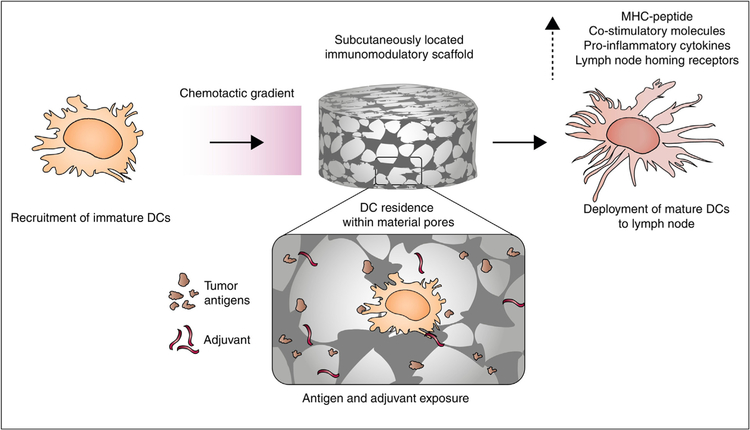Fig. 3.
Porous scaffolds can be subcutaneously implanted and designed to release chemoattractants to recruit immature dendritic cells (DCs). Inside the scaffold, DCs are exposed to tumor antigens and adjuvants, resulting in activation and maturation, after which the activated immune cells can exit the scaffold and engage in anti-tumor activity. Reproduced from Koshy and Mooney 2016 [46].

